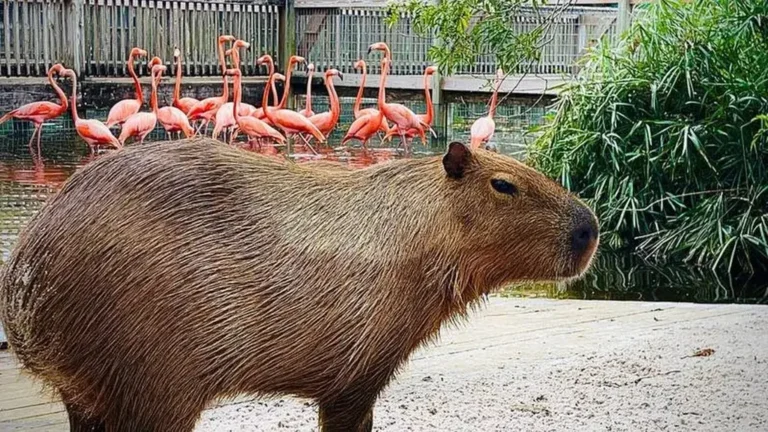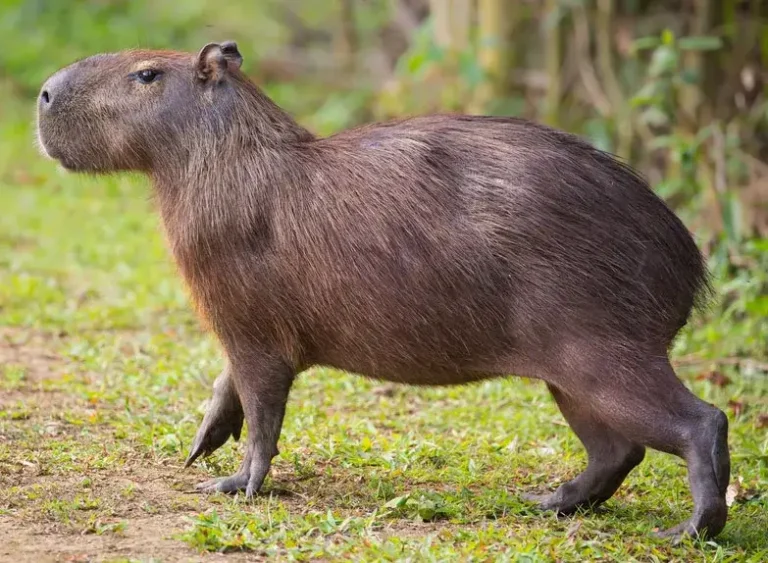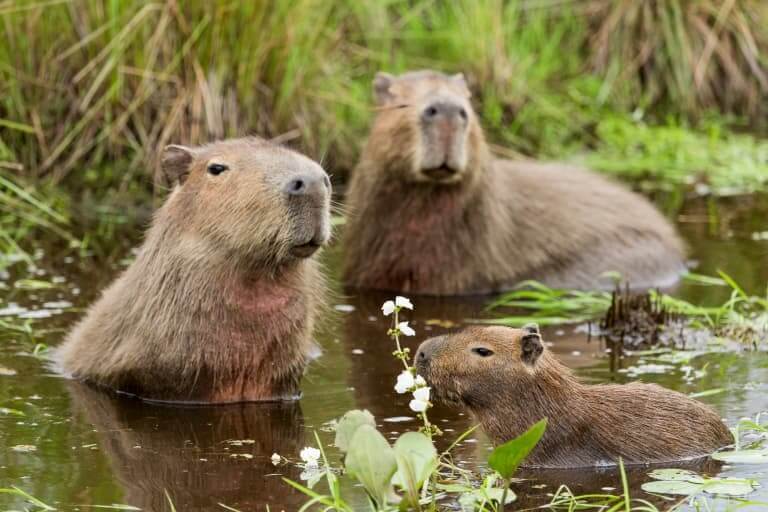Where Do Capybaras Live? Where Are Capybaras Found
Capybaras, the giant rodents in the Caviidae family, are fascinating creatures known for their charming demeanor and semi-aquatic lifestyle. They are native to South America, inhabiting various habitats rich in vegetation and close to water bodies. Let’s delve deeper into the locations where capybaras call home and their unique habitat preferences.
Contents
where do capybaras live? capybara where do they live?
Capybaras live in South America, primarily in dense forests, savannas, and near bodies of water like rivers, lakes, and swamps. They thrive in tropical and temperate regions.
Fun fact: Capybaras are excellent swimmers and can hold their breath underwater for up to five minutes!
where are capybaras from
Capybaras are native to South America, particularly in countries like Brazil, Venezuela, and Colombia. They are commonly found near water sources in grasslands and forests.
Fun fact: Capybaras are highly social animals and often live in groups of 10 to 20 individuals!
Which countries have capybara?

South America
In South America, you’ll find two species of capybaras: the common capybara and the lesser capybara. While the lesser capybara primarily resides in Panama, the common capybara is distributed widely across the continent. From Venezuela to Argentina and Brazil to Bolivia, capybaras thrive in diverse environments, including Venezuela, Colombia, Guyana, Suriname, Ecuador, Peru, Brazil, Argentina, Paraguay, Uruguay, and Bolivia. Notably absent in Chile due to geographical barriers posed by the Andes Mountains, capybaras are a common sight elsewhere in South America.
Florida
Interestingly, capybaras have made appearances far beyond their native South America. In the United States, particularly in Florida, sightings of these charming creatures have occurred. Although not officially confirmed as a breeding population, numerous capybaras have been spotted nationwide. These sightings are often attributed to released pets or escapees from captivity. While generally harmless, capybaras may occasionally venture into farms or gardens for food, posing minimal threats to humans or the environment.
Japan
Surprisingly, capybaras have also captured the hearts of people in Japan. Introduced to the country during the 1960s for zoo exhibits, capybaras quickly became beloved attractions. Known for their social nature, some Japanese zoos even provide these creatures with hot springs, known as onsens. The popularity of capybaras extends to cultural icons like Kapibarasan, a beloved cartoon character.
Related: What Does Capybaras Eat?
Native Habitat of Capybaras
Capybaras are semi-aquatic creatures, preferring habitats with dense vegetation and access to water sources such as marshes, swamps, lakes, ponds, and rivers. Their ideal environments include lowlands near water, flooded grasslands, and savannahs. Additionally, capybaras may inhabit agricultural fields or human settlements near water bodies. In Florida, mangrove swamps, wetlands, and forested riverbanks are typical habitats for these creatures.
Capybara Habitats and Biomes
Capybaras are adaptable creatures, thriving in various biomes such as rainforests, savannas/grasslands, and wetlands.
- Rainforests: Abundant freshwater and dense vegetation provide capybaras ample opportunities for hydration and shelter from predators in tropical rainforests.
- Savannas/Grasslands: During dry seasons, capybaras seek refuge near water sources in savannas and grasslands, utilizing tall grasses for cover.
- Wetlands: Saturated soils and aquatic plants make wetlands ideal habitats for capybaras, especially during wet seasons when water levels rise.
Related: How Much Do Capybaras Weigh?
Capybaras and Water
Water plays a crucial role in the lives of capybaras. These proficient swimmers spend much of their time in the water or nearby dense vegetation. Their webbed toes aid in swimming, while their coarse fur enables quick drying upon returning to land. Living near water also serves as a natural escape route from predators, as capybaras can swiftly retreat into the water to evade threats.
Living Together in Groups
Capybaras are highly social animals, often living in groups ranging from 10 to 20 individuals, though larger herds of 40 or more may exist. Communication among capybaras involves various vocalizations and body language. While generally resilient, capybaras face threats from hunting in some regions of South America despite their “least concern” status on the IUCN Red List.
Related: Are Capybaras Friendly Or Dangerous?
Conclusion
In conclusion, capybaras inhabit various environments across South America, with additional sightings in Florida and Japan. Their affinity for water and social nature makes them captivating creatures to observe. However, it’s essential to respect their wild nature and provide them with the space they need to thrive.
Frequently Asked Questions (FAQs) about Capybara Habitats
1. Where do capybaras live?
A: Capybaras are native to South America and can be found in various countries, including Venezuela, Colombia, Brazil, Argentina, and more. They inhabit habitats near water bodies such as marshes, swamps, lakes, ponds, and rivers.
2. Can capybaras live in other regions besides South America?
A: While capybaras are native to South America, they have been sighted in other parts of the world, such as Florida in the United States and Japan. However, these sightings are often attributed to escaped or released captive animals rather than established populations.
3. Do capybaras live in groups?
A: Capybaras are highly social animals and typically live in groups ranging from 10 to 20 individuals. Larger herds of 40 or more capybaras may also exist. Living in groups helps capybaras protect themselves from predators and maintain social bonds.
4. What kind of habitats do capybaras prefer?
A: Capybaras prefer habitats with dense vegetation and access to water sources. They can be found in various biomes, including rainforests, savannas/grasslands, and wetlands. These habitats provide them with food, shelter, and opportunities for swimming.
5. Do capybaras live near humans?
A: Yes, capybaras are adaptable animals and can sometimes live near human settlements, especially if water sources are nearby. They may inhabit agricultural fields, parks, or even urban areas, although they generally prefer natural habitats.
6. Are capybaras endangered?
A: Capybaras are listed as a species of “least concern” on the International Union for Conservation of Nature (IUCN) Red List. While they face habitat loss and hunting threats in some regions, their overall population remains stable.
7. How do capybaras protect themselves from predators?
A: Capybaras have several adaptations to help them evade predators. They are excellent swimmers and can quickly retreat into water bodies to escape threats. Additionally, living in groups allows them to watch out for each other and alert the group to potential dangers.
8. What do capybaras eat?
A: Capybaras are herbivores that feed on aquatic plants, grasses, fruits, and vegetables. They may also consume crops if they live near agricultural areas, sometimes leading to conflicts with farmers.
9. Are capybaras dangerous to humans?
A: Capybaras are generally peaceful animals and do not threaten humans significantly. However, like wild animals, they may become aggressive if provoked or threatened. Observing capybaras from a safe distance and avoiding approaching them in the wild is essential.
10. Can capybaras adapt to different climates?
A: Yes, capybaras are adaptable to various climates, although they prefer warm, tropical environments with plenty of water. They can tolerate both wet and dry seasons and are known to thrive in a range of habitats, from rainforests to grasslands.
- Golden Retriever Pros and Cons: What Every Pet Parent Should Know - 15 September 2025
- Cane Corso Dog Breed: Health, Care, and Lifespan - 14 September 2025
- Catahoula Leopard Dogs: Description, Temperament, Lifespan, & Facts - 21 July 2025






